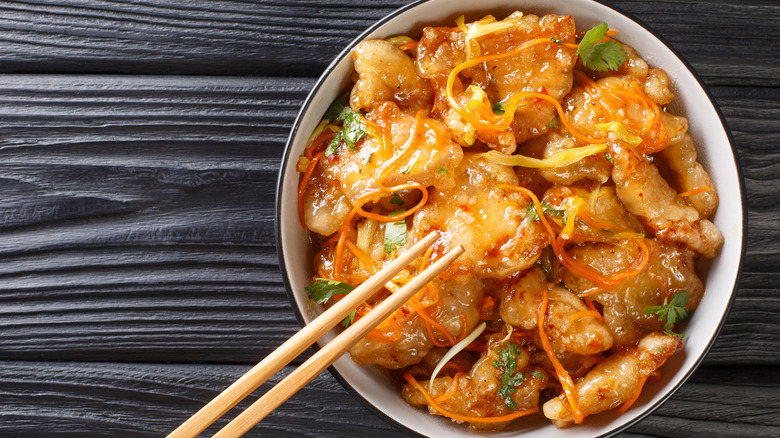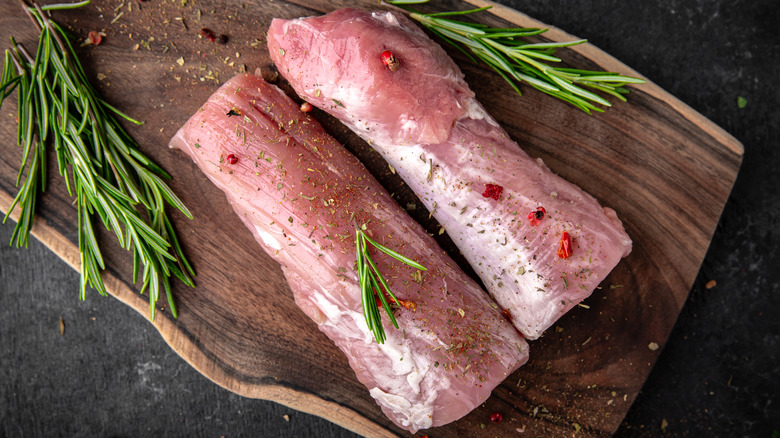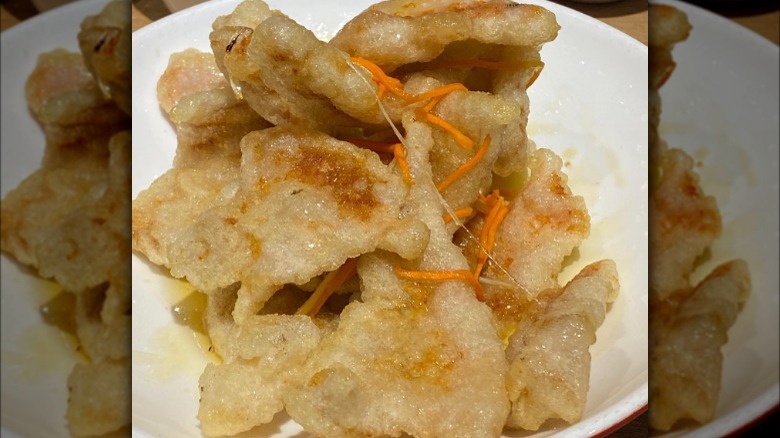Guo Bao Rou Is An Important Sweet And Sour Dish In Dongbei Cuisine
Chinese food is one of the most diverse cuisines in the world; most of the globally-adored Chinese food classics that you order at your local restaurant actually derive from Cantonese tradition, just one of the eight great Chinese cuisines. Each of the eight cuisines hails from a different region of China where cooking methods, cultural customs, local ingredients, and environmental factors all influence the dishes unique to the given region.
Many people across the world have grown fond of spicy Sichuan dishes and Cantonese dim sum, but few outside of China are familiar with the simple yet bold style of Dongbei cooking. While Lu cuisine is the only Northern cuisine recognized in the eight regional cuisines, there is a lot of variation in these cold climates' foods. In the Northeasternmost part of China sits the extremely cold Dongbei region. With a riverine landscape and rural mountain ranges, Dongbei cuisine is known for its freshwater seafood and wheat-based (rather than rice-based) staples.
It's impossible to fully get to know Dongbei cuisine without first trying guo bao rou. This popular sweet and sour pork dish hails from the icy town of Harbin, known for its annual ice and snow festival and Russian architecture. It is also thanks to Russian influence that this beloved dish even exists in the region.
History of guo bao rou
Dongbei cuisine is deeply influenced by its neighboring nations of Russia, Mongolia, and Korea. Particularly Russian influence can be seen around the region with the onion-domed cathedrals in Harbin and the prominence of sauerkraut being eaten everywhere. When it comes to the iconic guo bao rou, the extra-crispy pork dish is covered in a unique sweet and sour sauce that was invented when a group of Russians complained.
It's said that the dish was invented during the later part of the Qing Dynasty, sometime in the 20th century. In the bustling city of Harbin, the capital of the Heilongjiang Province and the largest city in the region, a private chef employed by the city's government created a new stir-fried pork dish. This meaty dish featured a rich sweet and sour sauce poured over the pork.
However, when a group of Russians living in Harbin ordered the dish, they did not like the overly heavy sauce. To appease them, the chef opted to create a lighter version of the sauce that is still used on the crispy pork dish today. He was successful at pleasing the Russian guests, and the updated version of guo bao rou has grown to be famous across Northern China. However, there are some slight variations in the ingredient list depending on where it's made.
Ingredients in guo bao rou
Guo bao rou is typically made from slices of pork loin that have had the fat removed. However, pork belly or other cuts of pork are also acceptable. These slices get coated in a starchy batter made up of potato starch. Corn starch is also acceptable, but potato starch is known for chewiness and is preferred in this recipe.
The tangy sweet and sour sauce is typically only made of a surprisingly simple combination of only two ingredients: white sugar and white vinegar. A pinch of salt is also often added to enhance the flavor. The iconic reddish-orange coloring that you might be used to seeing at Chinese restaurants is often thanks to an additional splash of ketchup.
However, if you're sticking to a traditional Northern ingredient lineup, then opting for no additional coloring is the best route. The sugar and vinegar are mixed with a 1:1 ratio and reduced, evenly balancing out the sweet and sour flavors.
As for the rest of the stir-fry, there is often a variety of vegetables featured alongside the meat. Thinly-sliced carrots, ginger, scallions, leek, and cilantro are common ingredients added to this dish in different parts of China. However, for those native to the Heilongjiang province, only adding garlic is considered the proper way to make this dish. But we encourage you to whip up both ways and decide for yourself which version you like better.
How guo bao rou is made and eaten
Even for beginners, this dish is relatively easy to make, and it only takes about an hour to throw together. The first step is to slice the pork loin into even-sized pieces that are about half a centimeter thick. The slices are then marinated with a couple of spices and condiments. Depending on the recipe, it may have you sprinkle white pepper and salt over the meat along with some soy sauce and Shaoxing wine. Slight variations in the marinade may occur.
While this is set aside, a starch slurry is made along with the sauce, both in separate bowls. When the pork is ready, it gets slathered in the starchy batter and all the pieces should be evenly coated. They then get deep-fried in oil twice. Trust us, the ultra-crispy golden coating is worth the extra effort.
You now have flavorful sauce and crunchy pork pieces that are ready to be stir-fried together with the aromatics and chopped veggies. Once the dish is assembled in the wok and adequately cooked, the saucy pork should be removed and eaten immediately.
The meat is often garnished with a little bit more cilantro and thinly sliced veggies. Then it is ready to eat, and it can be washed down with a refreshing Harbin beer.



